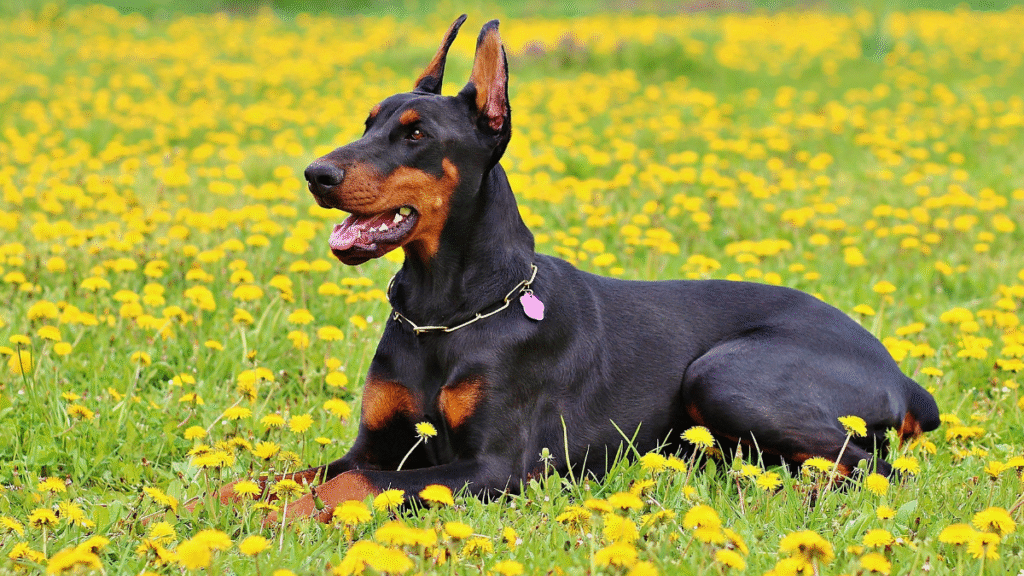Walking your dog is a fun and rewarding activity for both of you. However, it can quickly turn stressful and unpleasant when your dog starts barking, lunging, or freezing around other dogs. Whether your dog is barking reactively, tucking their tail, snapping fearfully, or pulling eagerly, you want to be able to enjoy your walks knowing your dog is calm and comfortable too.
Learning how to calm your dog around other dogs is not only important for peaceful walks—it’s also essential for your dog’s emotional well-being and social confidence. Fortunately, with patience, consistency, and the right approach, you can help your dog become more relaxed and confident around other dogs in no time.
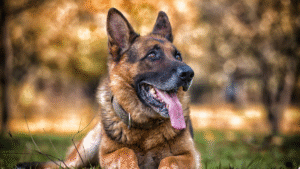
1. Understand the Root Cause of Your Dog’s Behavior
The first step to helping your dog stay calm around other dogs is understanding why they react in the first place. Different dogs have different triggers and motivations, so it’s important to identify what’s causing your dog’s behavior before you can address it effectively.
Common reasons dogs react to other dogs include:
-
Fear or anxiety: Your dog may have had a negative experience with another dog in the past and now feels fearful or anxious around them. This can lead to fear-based aggression or avoidance behavior.
-
Lack of socialization: Dogs that haven’t been properly socialized with other dogs during their critical development period (3–14 weeks old) often struggle to interact with other dogs as adults.
-
Territorial or protective behavior: Some dogs view other dogs as intruders and will bark, growl, or even bite to protect their territory, leash, or owner.
-
Frustration: Friendly dogs may become frustrated if they’re not allowed to greet other dogs and may bark or pull on the leash in an attempt to reach them.
What to do:
Pay attention to your dog’s body language before, during, and after an encounter with another dog. Look for signs of fear or anxiety (e.g., tail tucked, lip licking, ears back, avoiding eye contact) or signs of frustration or excitement (e.g., whining, jumping, lunging forward with a wagging tail).
Identifying the root cause is crucial, as different triggers require different solutions. For example, a fearful dog will need more space and confidence-building exercises, while an overly excited dog will benefit from impulse-control training.
Related:How To Teach Any Dog Not To Bark At Other Dogs On A Walk
2. Use Distance and Controlled Exposure (Desensitization)
Desensitization is one of the most effective ways to help your dog become less reactive around other dogs. This technique involves gradually exposing your dog to their triggers (other dogs) in a controlled and positive way to reduce stress and anxiety.
Start by determining your dog’s threshold distance—the point at which they first notice another dog but remain calm and responsive. For some dogs, this may be 50 feet away; for others, it could be 200 feet or more.
Steps for desensitizing your dog:
-
Find a quiet area where you can see other dogs at a distance, such as a large park or open field.
-
Keep your dog at their threshold distance—where they notice but don’t react to the other dog.
-
Reward calm behavior with treats or praise whenever your dog looks at the other dog and stays relaxed.
-
Gradually decrease the distance over several sessions as your dog becomes more comfortable.
If your dog reacts (barking, lunging, whining), you’ve gone too close. Move back to a distance where they can remain calm. The goal is to create positive experiences when your dog sees other dogs—they learn that calm behavior leads to rewards, not stress.
This process may take weeks or even months depending on your dog’s comfort level, but it’s one of the most humane and long-lasting methods for reducing reactivity.
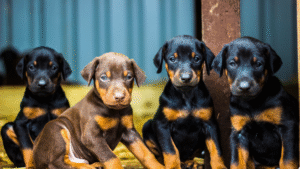
3. Teach Focus and Impulse Control Commands
Distracted dogs are often reactive dogs. Teaching your dog to focus on you and control their impulses is one of the most effective ways to keep them calm around other dogs. Focus and impulse-control training redirect your dog’s attention and help them think before reacting.
Useful commands include:
-
“Watch me” or “Look at me”: Teach your dog to make eye contact with you on cue. This is great for distracting them when another dog is nearby.
-
“Leave it”: This command teaches your dog to ignore distractions—whether it’s another dog, a squirrel, or a dropped piece of food.
-
“Sit” and “Stay”: Simple obedience commands give your dog something positive to do instead of reacting.
-
“Heel” or loose-leash walking: Training your dog to walk calmly beside you prevents lunging and keeps them mentally engaged.
Training tip:
Use high-value treats—something your dog absolutely loves, like small pieces of chicken or cheese. Reward your dog the moment they focus on you instead of the other dog.
Consistency is key. Practice these exercises daily in calm environments before introducing distractions. Over time, your dog will learn that paying attention to you brings good things, while reacting does not.
4. Stay Calm and Lead with Confidence
Dogs are incredibly sensitive to human emotions. If you tense up or become anxious when you see another dog, your dog will sense it and assume there’s something to fear or defend against. Many reactive dogs are simply responding to their owner’s stress.
How to project calm leadership:
-
Stay relaxed: Keep your shoulders down, breathe steadily, and avoid tightening the leash. A tense leash signals your dog to be on high alert.
-
Use a neutral tone: Don’t yell or scold your dog when they react—it only increases their stress. Instead, use a calm, upbeat voice to give cues and encourage good behavior.
-
Move with purpose: Don’t freeze or panic when another dog approaches. Walk past confidently. If needed, cross the street or turn around smoothly rather than abruptly.
Your mindset matters.
You are your dog’s source of safety and guidance. The calmer and more confident you are, the more your dog will trust you and look to you for cues.
If you struggle with anxiety during walks, practice walking confidently on your own. Take deep breaths, visualize calm encounters, and maintain a relaxed posture. Over time, your dog will mirror your calm energy.
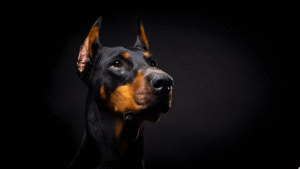
5. Use Positive Reinforcement and Avoid Punishment
When dealing with reactivity, punishment almost always backfires. Scolding, leash corrections, or shock collars may suppress the behavior temporarily but ultimately increase your dog’s fear and stress—making the problem worse.
Positive reinforcement, on the other hand, encourages your dog to repeat calm and desirable behavior. The more your dog associates seeing other dogs with good things (like treats and praise), the more relaxed they’ll become.
Examples of positive reinforcement:
-
Reward your dog immediately when they glance at another dog and stay calm.
-
Use a cheerful tone and say “Good dog!” when your dog walks past another dog without reacting.
-
Pair the sight of another dog with treats, toys, or playtime, especially if your dog is fearful.
Avoid these common mistakes:
-
Don’t force interactions: Never make your dog “say hi” to another dog if they’re uncomfortable. It can increase fear or aggression.
-
Don’t punish barking or growling: These are communication signals. Instead, redirect your dog’s focus and increase distance.
-
Don’t overwhelm your dog: Avoid crowded dog parks or busy areas until your dog is calmer and more confident.
Positive reinforcement builds trust and helps your dog learn that staying calm and listening to you is rewarding. With patience, your dog will begin to associate other dogs with safety, not stress.
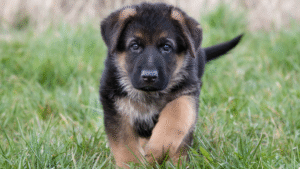
Bonus Tip: Exercise and Mental Stimulation Matter
A tired dog is a calm dog. Regular physical exercise and mental stimulation are essential for managing your dog’s energy and reducing reactivity.
-
Physical exercise: Daily walks, fetch, running, or agility training help burn off excess energy that might otherwise fuel anxious or reactive behavior.
-
Mental stimulation: Puzzle toys, nose work, obedience games, and interactive play keep your dog’s mind active and prevent boredom-related restlessness.
If your dog has pent-up energy, even minor triggers—like seeing another dog—can set them off. A well-exercised and mentally stimulated dog is far more likely to stay composed and responsive.
Final Thoughts
Helping your dog stay calm around other dogs takes time, patience, and understanding. There’s no instant fix, but with consistent training, positive experiences, and empathy, you can make tremendous progress.
Start by identifying your dog’s triggers, then use a combination of desensitization, focus training, and calm leadership to build confidence. Remember, your dog looks to you for reassurance—when you stay calm, patient, and positive, they’ll follow your lead.
If your dog’s reactivity is severe or you’re unsure how to manage it safely, seek help from a certified dog trainer or behaviorist. A professional can design a customized plan tailored to your dog’s needs.
- 5 Cheap Alternatives To Dog Training Equipment - November 12, 2025
- Homemade Calming Spray To Help Dogs During Training - November 12, 2025
- 7 DIY Dog Training Tools You Can Make From Household Items - November 12, 2025
